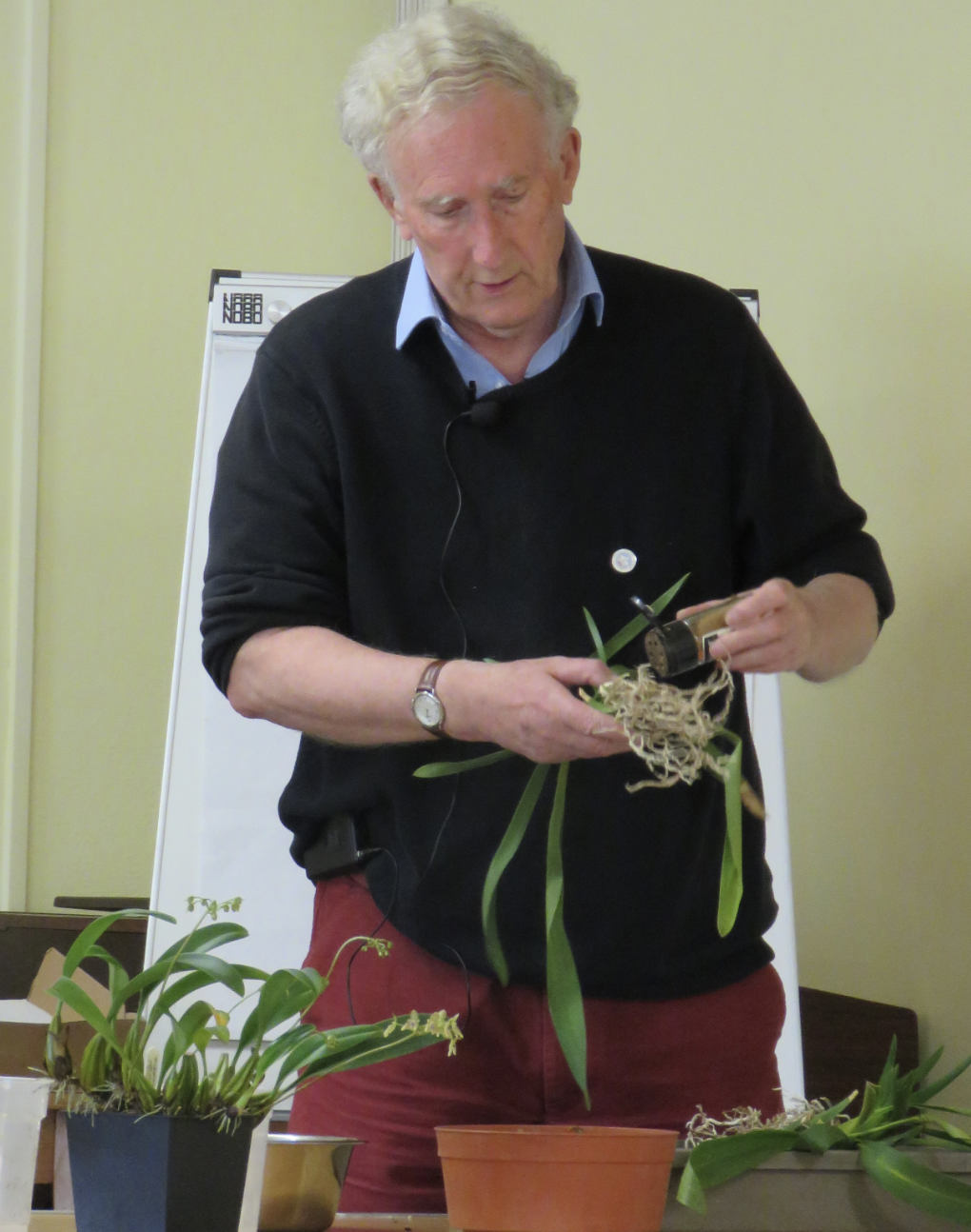At our September meeting members had the pleasure of hearing the president of the East Anglian Orchid Society, Mr Colin Thorburn (above), present an excellent talk on Orchids which he followed up with a practical demonstration of how to care for and propagate orchids.

Colin started his talk with some facts and figures on where orchids are found and the number of species. Orchids are found on every continent except Antartica. There are around 30,000 individual species of orchid, with some 250,000 hybrids. The greatest numbers are found in South East Asia and in South America. Orchids have three sepals, which are the outer petals that you see on an unopened bud. There are also three petals, but one of the petals has been specialised into a labellum (or lip), whose function is to attract pollinating insects. In orchids the reproductive organ, known as the column, combines both the male and female parts in one structure. The leaves of many orchids are specifically designed for water conservation. They have a heavy waxy coating and specialised stomata (openings through which the leaf breathes) that help to prevent water loss during transpiration.
Colin then provided useful information on how to grow and care for Orchids. Orchids need very good drainage and are best grown in clear dome pots that allow air and light to get to the roots and you can see the roots grow. Compost should have a main base of bark, which is first steam-treated to reduce any chance of disease, with perlite. pumice, coconut husk and rock wool topped by sphagnum moss. Orchids need high humidity (above 60%) and should only be watered when dry to the touch, ideally using rainwater. Also it is best to water plants early in the morning so they can dry off during the day. The main pests with orchids are red spider mite, mealy bugs, scale insects, slugs, fungal rot and some viruses.
After a tea break Colin then demonstrated how to split an orchid plant to get additional plants, including how to carefully separate the roots and treat them with cinnamon powder prior to replanting. The meeting finished with a lively Q&A session with Colin passing on expert information from someone who has been growing orchids for nearly 40 years.
Upcoming Meetings
Our October meeting (October 27th) will have Dr Anne Edwards presenting a fascinating talk on The Work and History of the John Innes Centre based at UEA. Our November meeting (November 24th) will have Richard Clark of Panache Plants talking about Carnivorous plants and South African bulbs.
All meetings are held on the 4th Thursday of the month at Holme Hale Pavilion and start at 2.30pm. New members from anywhere in the district are always welcome, so come along and join us at one of our monthly meetings.
Website: ashillgardeningclub.wordpress.com/
Email: ashillholmehalegardenclub@gmail.com

